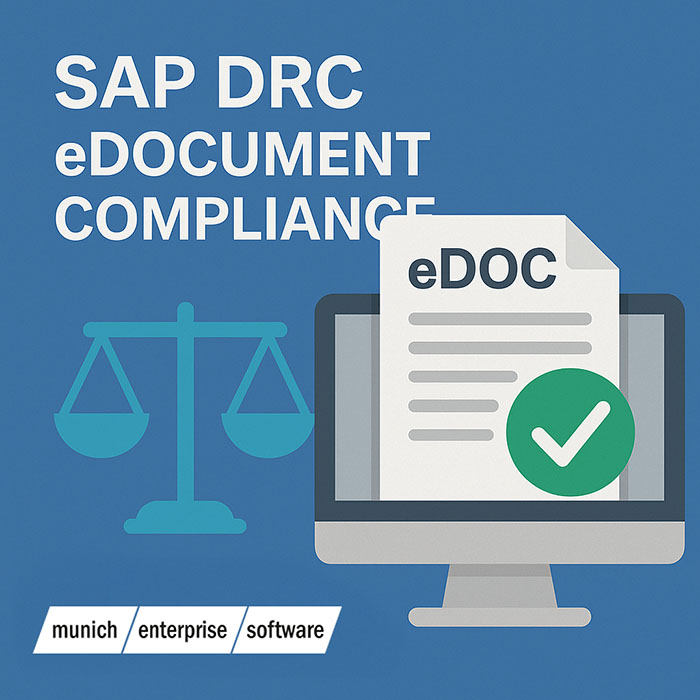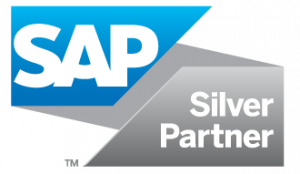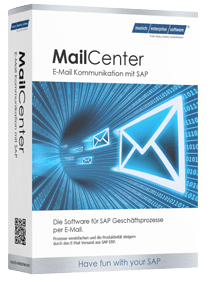What SAP customers need to know now – from XRechnung and ZUGFeRD to SAP DRC and practical implementation methods.
Why the topic is important now
With e-billing, the era of paper-based receipts and pure PDF invoices ends. From 1 January 2025, the receipt of e-invoices in B2B will be mandatory; the exhibition will follow in stages from 2026/27. Companies benefit from automated processes, less manual checking and higher data quality.
Table of Contents

An e-invoice is a structured, machine-readable data format. In Germany, XRechnung (XML) and ZUGFeRD (PDF/A-3 with embedded XML) are particularly common – both formats that can be integrated directly into ERP processes.
What is SAP DRC – and how does it relate to the eDocument Framework?
SAP Document and Reporting Compliance (SAP DRC) is the solution provided by SAP to create, process, and monitor electronic documents – including e-invoices – as well as legal notifications across borders. The technical basis is the eDocument Framework. While the framework provides the infrastructure (create, transform, send, status feedback), DRC comes with preconfigured country content and ongoing legal updates.
- Integration into SAP S/4HANA (options also for ECC)
- Country scenarios and formats (e.g. XRechnung, ZUGFeRD, PEPPOL flows)
- Electronic document monitor for status, error analysis and traceability
- Scalable foundation for future specifications – beyond e-invoicing (e.g. tax reports)
Functions & Architecture in Practice
DRC standardizes the process from the invoice source (billing document in SD/FI) to structured e-invoice. Mapping and validation are rule-based; Transfers can be made via web services, networks such as PEPPOL, or country-specific gateways. The Document Monitor bundles the status flow (created, submitted, acknowledged/rejected) and facilitates troubleshooting.
- Conversion to the target format (e.g. XRechnung/UBL, ZUGFeRD XML)
- Regular legal updates per country
- Monitoring with logs, export and audit options
- Integration into existing approval, archiving and audit processes
DRC or add-on – which solution fits?
The choice depends on internationality, schedule and budget. DRC plays to its strengths when several countries have to be mapped at the same time or when further reporting scenarios are added in the future. For medium-sized companies with a focus on Germany, specialized add-ons are often faster to introduce and lean in operation.
- Internationally active: DRC with country packages and central monitoring
- Focus Germany/Short timeline: Add-on with less complexity
- Transition ECC → S/4HANA: Clarify early on which option best supports the switch. Our SAP e-Invoice add-on is fully compatible with S/4 HANA
Procedure: How to make your SAP fit for e-invoicing
- As-is analysis: Check which formats partners/authorities expect and whether master data (e.g. VAT ID, routing ID, bank data) is complete.
- Format and channel strategy: Define XRechnung and ZUGFeRD; Define transmission channels (e-mail, PEPPOL, portals).
- Solution selection: DRC or add-on – depending on countries, roadmap and operations.
- Process & training: Tighten creation, testing, approval, monitoring and audit-proof archiving.
- Pilot & Rollout: Start with a manageable scenario, then scale.
Practical tip: Plan future shipping at the same time. Reception is expected from 2025; with the obligation to issue in 2026/27, the need for integration will increase noticeably.
Frequently asked questions from projects
Does DRC support XRechnung and ZUGFeRD? Yes, Germany is one of the scenarios covered; DRC provides the appropriate content. The specific characteristics depend on the release status and activated country scenarios.
How do I monitor the status? The electronic document monitor allows you to see the statuses of creation, transmission and feedback and to make targeted adjustments in the event of errors.
What is the advantage over in-house developments? Uniform processes across countries reduce operational costs and risks.
Conclusion and next steps
E-invoicing is both a duty and an opportunity. DRC provides SAP customers with a scalable foundation for e-invoices and other compliance scenarios. If you want to primarily address German requirements with a short introduction time and still want standardized content and ongoing legal updates, you are on the right track with a specialized add-on. Our SAP e-invoice add-on is the right solution for this:
Get in touch and arrange a short demo – so that receipt (2025) and dispatch (2026/27) run on time and efficiently.






